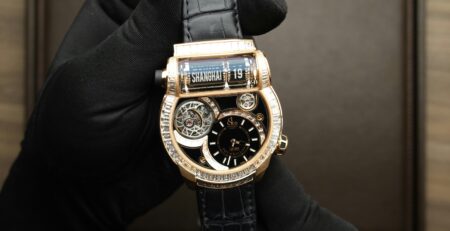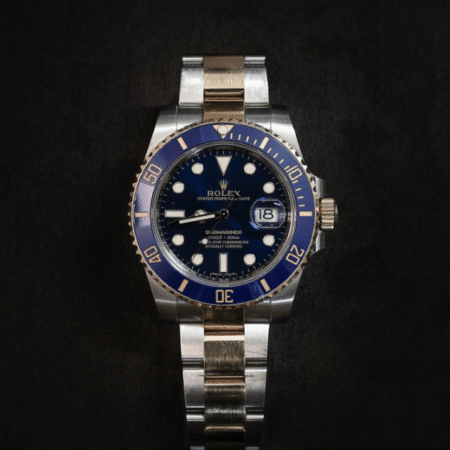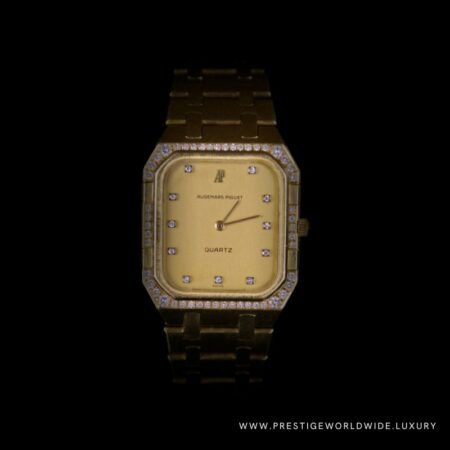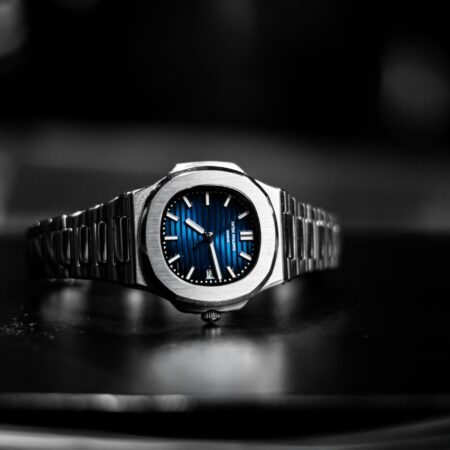In high-stakes collecting, that single question can add or erase thousands of dollars. Provenance is the paper trail and physical evidence that answers it. Complete sets (box, papers, spare links, hang tags, even the original sales receipt) form the most persuasive chapter of that story. Let’s dissect why the market prizes them and how they reshape value.
The Trust Economy of Horology
Walk into any serious dealer’s showroom, and you’ll notice something immediately: the watches with complete sets occupy the prime real estate. Complete documentation functions as the horological equivalent of a blue-chip stock certificate.
Recent market analysis reveals that modern references command a 12–25% premium when sold with full sets, while coveted vintage pieces can see premiums stretch to 30–60%. These numbers reflect genuine market forces that every serious collector understands intuitively.
Consider the tale of two Submariners: identical 14060M references from 2005. The head-only example languishes at $8,000, while its fully-documented sibling moves at $9,800—a 22% premium that represents real money in anyone’s portfolio. Scale this up to vintage grails, and the math becomes impossible to ignore.
What exactly constitutes a “complete set”
The Foundation Tier:
Outer presentation box (condition matters more than collectors admit)
Inner watch cushion or holder
Warranty card with matching serials
Instruction manual (original, not a PDF printout)
The Connoisseur Tier:
Hang tags and bezel protectors
Spare links and sizing tools
Original sales receipt or invoice
Service history documentation
The Grail Tier:
Special edition certificates
Retailer-specific documentation (Tiffany stamps, Cartier papers)
Historical provenance (ownership history, notable events)
Period-correct accessories (original straps, tools)
Each tier represents a different level of market confidence. A grail-tier provenance package creates a narrative that transforms metal and glass into heritage. A well-documented piece spends less time languishing on Chrono24 or dealer trays; buyers commit faster and negotiate less.
The Psychology of Paper
Why do collectors obsess over cardboard boxes destined for drawers? The answer lies in the fundamental psychology of high-value transactions. Counterfeits grow more convincing every year. A COSC certificate with a matching serial, a punched warranty card, or a jeweler’s invoice from 1997 removes 95 % of the doubt before a loupe even comes out.
But there’s more at play than mere verification. Complete sets trigger what behavioral economists call “loss aversion”, the tendency to place higher value on things we might lose. If every item that left the boutique on day one still travels with the watch, you own a time capsule, priced accordingly.
When Papers Matter Most
Not all watches benefit equally from complete documentation. The provenance premium follows predictable patterns that savvy collectors learn to read:
Modern Production Pieces (< 10 years): Missing boxes create minor friction (−5%), but missing papers signal potential problems (−15%). These watches are young enough that documentation loss feels suspicious rather than natural.
Neo-Vintage Limited Editions (1990s–2000s): This sweet spot sees the heaviest premiums. Collectors who remember these pieces now have clear expectations about what should accompany them. Missing documentation can crater values by 25% or more.
Pre-1980 Vintage: Here, the rules shift. Original boxes become exponentially rarer, and their absence carries minimal penalty. However, service records and retailer documentation gain outsized importance—particularly for pieces with modified or refinished cases.
Celebrity or Event-Worn Pieces: Documentation becomes critical. Without provenance, these watches lose their entire premium over standard examples. The story is the value.
When Completeness Becomes Obsession
The pursuit of complete sets has created its pathologies. Reproduction boxes and forged papers circulate with increasing sophistication. Sellers sometimes “complete” sets by sourcing period-correct but non-original documentation, a practice that technically satisfies the requirement while violating its spirit.
Smart collectors learn to spot these reconstructions. Period-correct boxes that show no wear, pristine papers for well-worn watches, and mismatched regional documentation all raise red flags. Authentic incompleteness trumps artificial completeness every time.
The Liquidity Premium
If you view your watches as alternative assets, complete sets offer a crucial liquidity advantage. When market conditions shift, as they inevitably do, fully documented pieces find buyers faster and at better prices.
This liquidity premium compounds over time. A watch purchased with complete documentation today preserves the option to sell in any market condition. Strip away the papers, and you’ve essentially tied your investment to the collector market’s most motivated buyers, a much smaller and more volatile pool.
Practical Wisdom
For Buyers:
Cross-reference all serial numbers before the wire transfer
Request detailed photos of every component—sellers hiding flaws often provide only glamour shots
Factor future resale into your purchase decision, even if you’re a “keeper”
Remember: you’re buying the story as much as the watch
For Sellers:
Audit your collection’s documentation before you need to sell
Photograph everything with sensitive information masked
Consider consolidating service records into a single, professional presentation
Price for completeness, buyers recognize and reward thoroughness
In horology, provenance is compounded trust. A complete set crystallizes that trust into tangible form, turning a fine watch into a certified artefact and ensuring the story you buy today remains intact for the next custodian.











